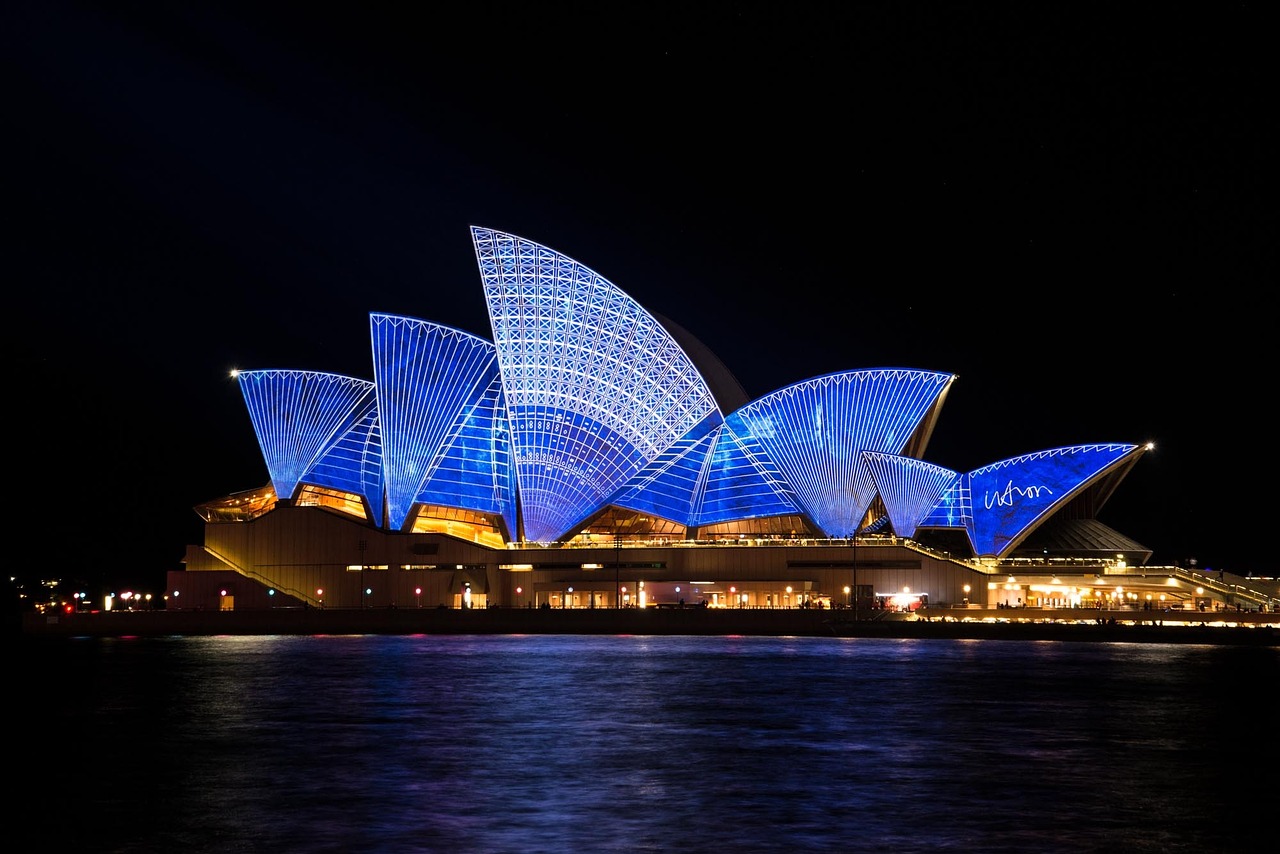The Sydney Opera House is one of the most recognized structures in the world, standing as a symbol of Australia’s rich cultural heritage and architectural brilliance. Designed by Danish architect Jørn Utzon, it opened to the public in 1973 and has since become a hub for the arts, hosting thousands of performances every year. Whether you’re an architecture enthusiast or a casual traveler, a visit to this UNESCO World Heritage Site is a must.

1. Location and Accessibility
Located in Sydney’s Bennelong Point, the Opera House is easily accessible by public transport, car, or even ferry. It is situated adjacent to the Sydney Harbour Bridge, offering stunning views of the harbor and surrounding landmarks. For those flying into Sydney, it’s just a 15-minute drive from Kingsford Smith Airport.
Points of Entry
- By Train: Circular Quay is the closest station, a 5-minute walk from the Opera House.
- By Ferry: The Sydney Ferries operate regularly, providing an iconic way to reach the site.
- By Car: Parking is available but can be limited during peak times.
2. Architectural Significance
The Opera House is a marvel of 20th-century architecture, often compared to the great Pyramids of Egypt or the Taj Mahal in India. The building’s design mimics the sails of a ship, a nod to Sydney’s maritime history. The roof, made of white, pre-cast concrete shells, contrasts beautifully against the blue waters of Sydney Harbour.
Key Features:
- Shell Roofs: The most recognizable feature, made up of 2,194 pre-cast concrete segments.
- Acoustic Design: The interior was designed to host world-class performances with impeccable sound quality.
- Modular Design: The building is designed in such a way that each part functions autonomously while contributing to the overall visual impact.
3. Tours and Performances
You can take guided tours of the Sydney Opera House, which offer behind-the-scenes insights into its construction, history, and day-to-day operations. These tours run multiple times daily and are available in several languages.
Tour Types:
- Standard Tour: A comprehensive look at the architecture, history, and function of the Opera House.
- Backstage Tour: This tour grants access to areas usually reserved for performers and staff.
- Indigenous Cultural Tour: Learn about the Aboriginal history of Bennelong Point and the surrounding area.
In addition to tours, the Opera House is famous for its diverse range of performances. These include opera, ballet, theater, and contemporary music concerts. Make sure to check the event calendar before your visit.

4. Best Time to Visit
Sydney enjoys a temperate climate, making it a year-round destination. However, the best time to visit the Opera House is during Sydney’s spring (September to November) or autumn (March to May) when the weather is mild, and there are fewer tourists.
Visitor Tips:
- Arrive Early: Beat the crowds by arriving at least 30 minutes before your scheduled tour or performance.
- Dress Code: While there’s no strict dress code, many performances encourage smart casual attire.
- Photography: Photography is allowed in certain areas but prohibited during performances.
Tips for Visiting the Sydney Opera House
A visit to the Sydney Opera House is not just about architecture and performances. Here are some practical tips to enhance your experience:
1. Book Tickets in Advance
Due to the popularity of both tours and performances, it’s advisable to book your tickets ahead of time. This ensures you get a slot at your preferred time and avoids long queues.
2. Best Photo Spots
For the perfect snapshot, head to the nearby Mrs Macquarie’s Chair for panoramic views of both the Opera House and Sydney Harbour Bridge. Circular Quay also offers excellent vantage points.

3. Dine at the Opera House
The Opera House is home to several world-class dining options. Bennelong restaurant offers fine dining with views of the harbour, while Opera Bar is more casual and perfect for a quick bite or drinks.
4. Check for Free Events
Sydney Opera House frequently hosts free events and performances. These range from live music to outdoor film screenings. Check their website for details on what’s happening during your visit.
Safety Tips for Tourists
While Sydney is generally a safe city, here are some safety tips specific to the Opera House and its surroundings:
1. Watch Your Belongings
The Opera House can get crowded, especially during performances or peak tourist times. Always keep an eye on your belongings and avoid carrying valuables unless necessary.
2. Be Cautious on the Steps
The front steps of the Opera House are steep, and can become slippery when wet. Hold onto the railings, especially if you’re visiting with children or elderly family members.
3. Sun Protection
Sydney can be very sunny, even in cooler months. Bring sun protection like a hat and sunscreen, particularly if you plan on spending time outdoors around the harbour area.
4. Emergency Contacts
In case of an emergency, dial 000 for police, fire, or ambulance. There are also security personnel stationed at the Opera House who can assist with minor issues.

Conclusion
The Sydney Opera House is more than just a landmark—it’s an experience. From its awe-inspiring architecture to its rich cultural offerings, a visit here is a highlight of any trip to Sydney. Whether you’re exploring the exterior, attending a performance, or enjoying a meal with stunning harbour views, the Opera House offers something for everyone.
For a seamless experience, make sure to plan ahead, follow the safety tips, and immerse yourself in the cultural wealth that this iconic site has to offer.
Internal Links: For more on cultural heritage sites in India, you can check out articles on Ajanta and Ellora Caves or other remarkable UNESCO sites across the world.
Top Tourist Destinations in India: A Complete Travel Guide
Explore India’s Rich Culture and Tourism Wonders
Chotila Tourism: Discover the Hidden Gems
Zariya Mahadev Temple: A Spiritual Gem in Surendranagar
External Link:
https://en.wikipedia.org/wiki/Sydney_Opera_House
Product Link:


